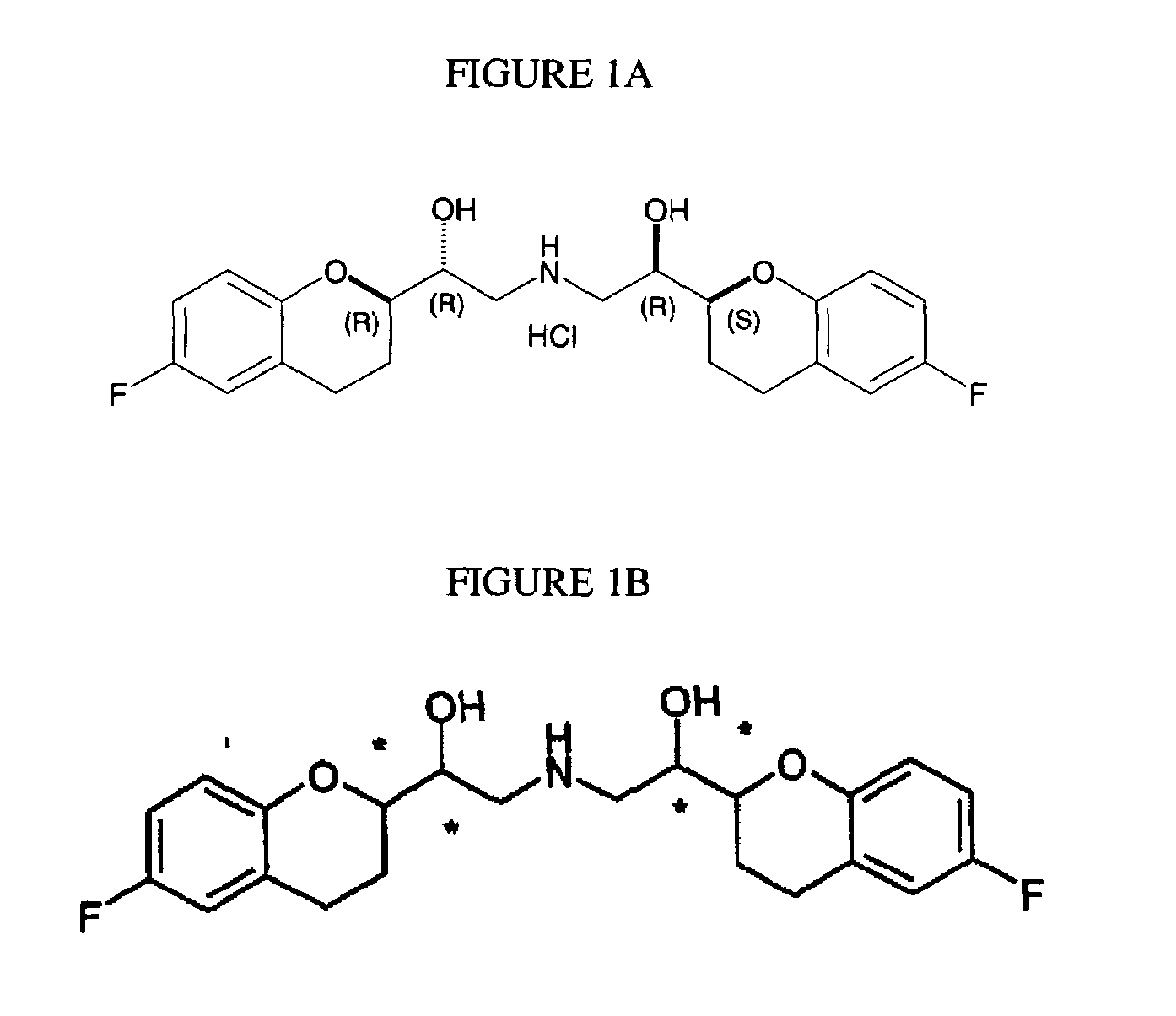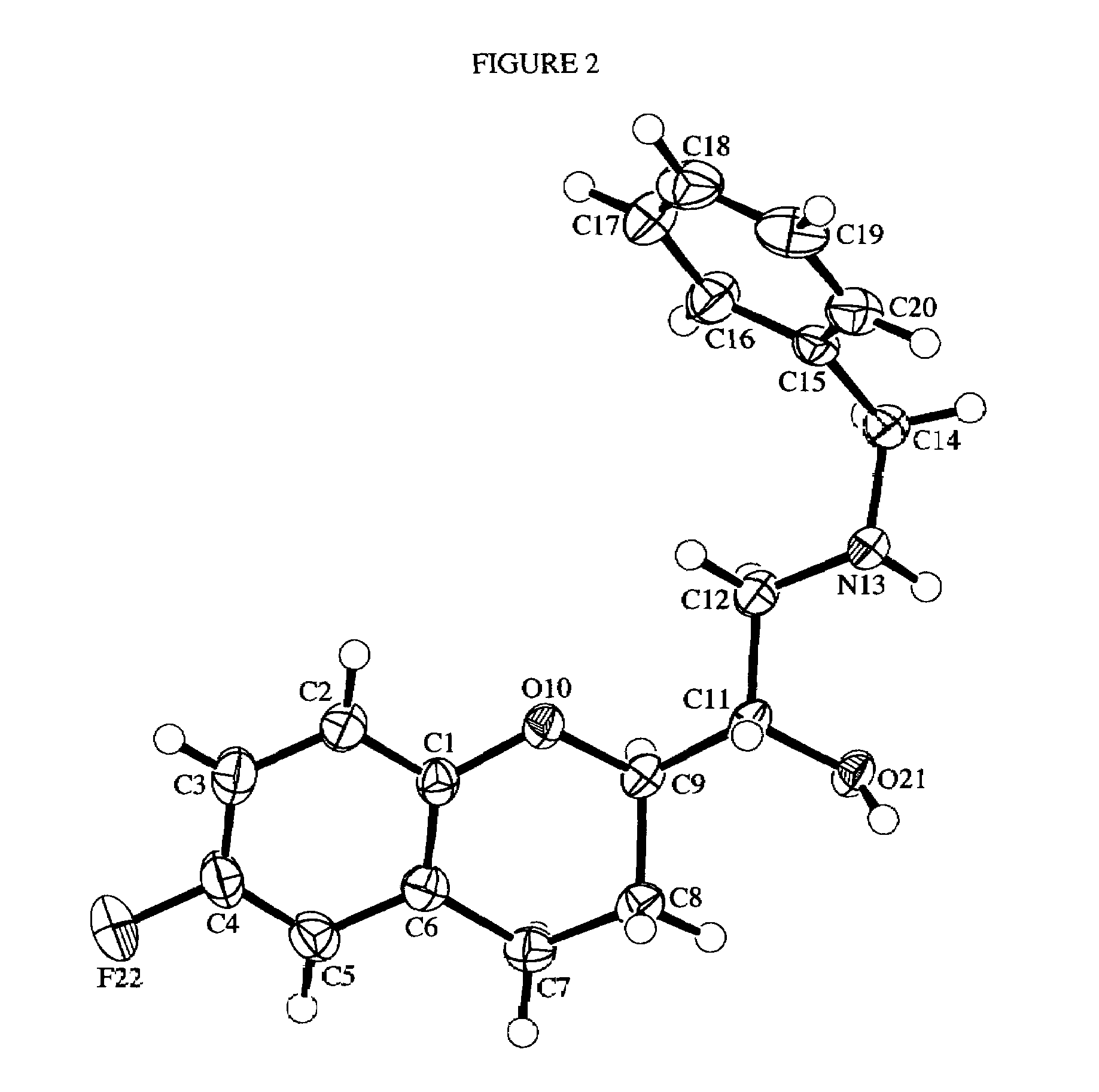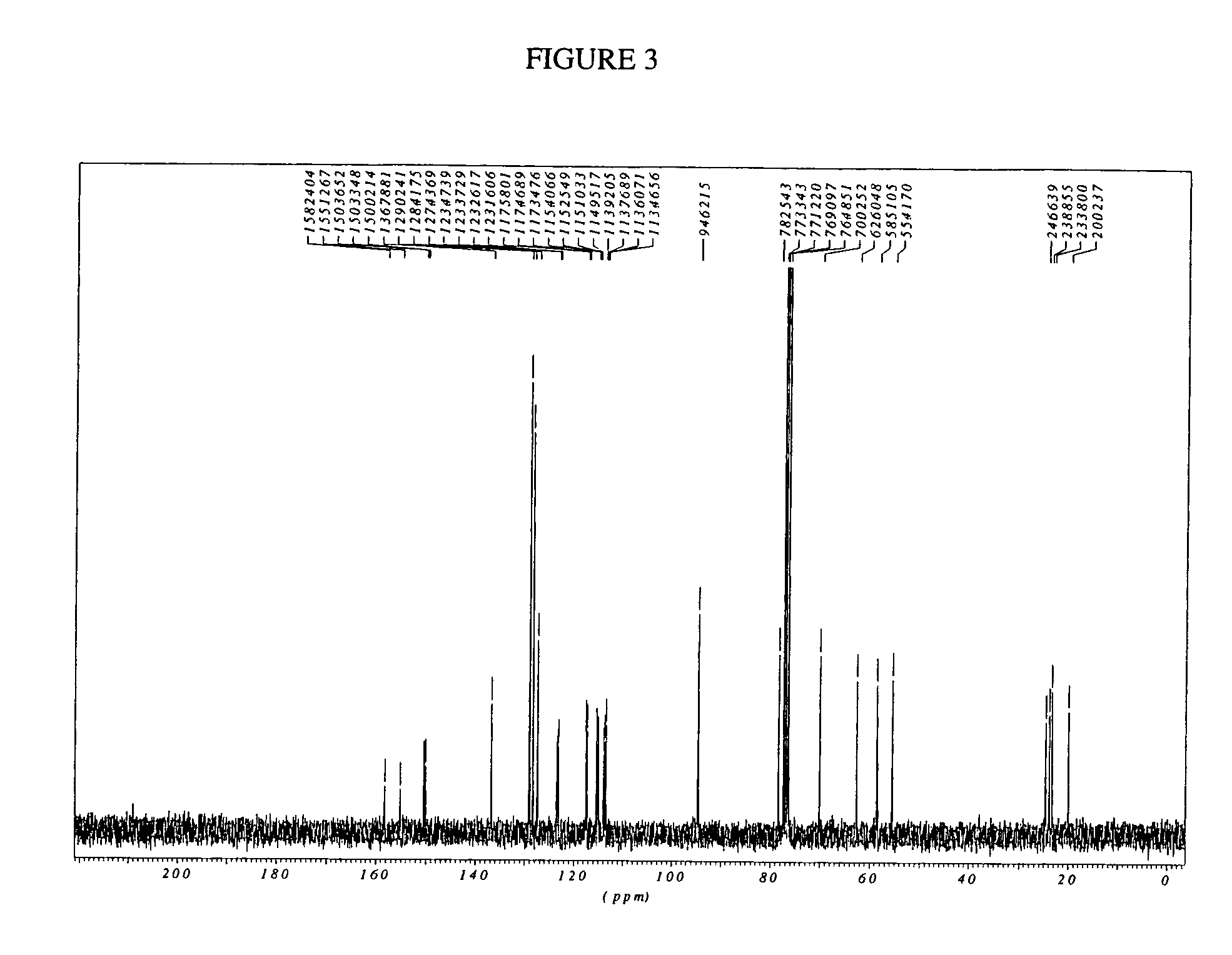Process for preparation of racemic Nebivolol
a technology of nebivolol and nebivolol, which is applied in the field of process for the preparation of racemic nebivolol, to achieve the effect of improving the overall yield
- Summary
- Abstract
- Description
- Claims
- Application Information
AI Technical Summary
Benefits of technology
Problems solved by technology
Method used
Image
Examples
example 1
[0321]Step 1: Preparation of (±)-5-[6-fluorochroman-2-carbonyl]-2,2-dimethyl[1,3]dioxane-4,6-dione (compound III).
[0322]
[0323]Thionylchloride (109.21 g, 918 mmol) was added under nitrogen atmosphere at 20-25° C. to a suspension of 6-fluorochroman-2-carboxylic acid (90.00 g, 459 mmol) and DMF (1.68 g, 23 mmol) in toluene (635 ml). Afterwards, the suspension was heated to an internal temperature of 60-70° C., whereupon a clear yellow solution was obtained under simultaneous evolution of a gas. The reaction was completed within 70 min at this temperature, and the mixture was then concentrated in vacuum (bath temperature 45-50° C., pressure≦35 mbar) to yield the chroman-2-carboxylic acid chloride as a yellow oil (112.65 g). The crude product was dissolved in methylene chloride (65 ml) and added slowly under nitrogen atmosphere to a solution of Meldrum's acid (70.90 g, 482 mmol) and pyridine (72.62 g, 918 mmol) in methylene chloride (261 ml) at an internal temperature of 0-10° C. The rea...
example 2
[0324]Step 2, route A: Preparation of (±)-1-(6-fluoro-chroman-2-yl)-ethanone (compound IVa)
[0325]
[0326]Example 1 was reproduced using 16 g of 6-fluorochroman-2-carboxylic acid, and the residue obtained after work up and evaporation of methylene chloride was used directly for Step 2, route A. A mixture of thus obtained crude product (compound III) with water (40 ml) and acetic acid (40 ml) was heated for 70 min to reflux and then cooled to room temperature. The reaction mixture was extracted with methylene chloride (40 ml), and the organic layer was twice washed with 1 N aqueous NaOH solution (each 20 ml). After drying over MgSO4, the organic layer was filtrated and evaporated. The residue was purified by column chromatography over silica gel using ethylacetate / cyclohexane (⅓ by volume) as eluent. Collection of the second fraction and evaporation of the solvent gave the product as yellow oil (yield: 11.89 g, HPLC-purity: 98.76%).
example 3
[0327]Step 2, route B: Preparation of (±)-3-(6-fluorochroman-2-yl)-3-oxo-propionic acid ethyl ester (compound IVb as ethylester).
[0328]
[0329]Example 1 was reproduced using 16 g of 6-fluorochroman-2-carboxylic acid and the residue obtained after work up and evaporation of methylene chloride was used directly for Step 2, route B. A suspension of this crude product (compound III) in ethanol (150 ml) was heated to reflux for 75 min, whereupon a clear solution was obtained. After cooling of the solution to room temperature and evaporation of the solvent, the residue was portioned between methylene chloride (80 ml) and water (80 ml). The phases were separated, and the organic layer extracted with 1 N aqueous NaOH solution (40 ml). The methylene chloride solution was dried over MgSO4, filtrated and evaporated. The residue was purified by column chromatography over silica gel using ethylacetate / cyclohexane (¼ by volume) as eluent. Collection of the first fraction and evaporation of the solv...
PUM
| Property | Measurement | Unit |
|---|---|---|
| temperature | aaaaa | aaaaa |
| temperature | aaaaa | aaaaa |
| temperature | aaaaa | aaaaa |
Abstract
Description
Claims
Application Information
 Login to View More
Login to View More - R&D
- Intellectual Property
- Life Sciences
- Materials
- Tech Scout
- Unparalleled Data Quality
- Higher Quality Content
- 60% Fewer Hallucinations
Browse by: Latest US Patents, China's latest patents, Technical Efficacy Thesaurus, Application Domain, Technology Topic, Popular Technical Reports.
© 2025 PatSnap. All rights reserved.Legal|Privacy policy|Modern Slavery Act Transparency Statement|Sitemap|About US| Contact US: help@patsnap.com



